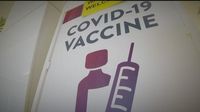Across North America, a patchwork of COVID-19 vaccine policies is emerging as governments grapple with waning public demand, shifting federal guidance, and the ever-present specter of new coronavirus variants. From Alberta’s controversial $100 vaccine fee to Maryland’s legislative push for universal access, the landscape of immunization has never looked more fractured—or more politically charged.
On September 8, 2025, Alberta’s Minister of Primary and Preventative Health Services, Adriana LaGrange, found herself on the defensive. In an interview with Global News, LaGrange explained why most Albertans would now have to pay $100 out of pocket for a COVID-19 vaccine during the fall immunization campaign. The move, announced back in June, came after the federal government ended its pandemic-era practice of buying and distributing vaccines for the provinces—a return, LaGrange argued, to the way other immunization programs are typically handled.
“This is the first year that the federal government has not paid for the program since it started four years ago,” LaGrange said. The province, she noted, had to confront a sobering reality: last year, $44 million worth of unused vaccine doses were thrown out. “We cannot afford to throw away and waste vaccine and the cost of that vaccine, which is what we’ve seen over the last number of years.”
According to Global News, Alberta has ordered about 500,000 doses for this fall, a slight reduction from last year, with a 20 percent buffer to account for unexpected demand. Still, uptake has been on a steady decline—dropping from 17 percent of Albertans two years ago to just 13 percent last year. The new fee applies to anyone who doesn’t fall into a high-risk category or isn’t a healthcare worker. Initially, even healthcare workers were excluded from free shots, but the province reversed course after negotiations with unions.
In a further shake-up, Alberta has excluded pharmacists from administering the vaccine, despite pharmacies being the primary delivery point in previous years. Now, residents must book appointments through a central system. LaGrange defended the change, arguing that pharmacies contributed to wastage, as multi-dose vials often expired before they could be fully used.
But not everyone is convinced. Dr. James Talbot, former Alberta chief medical officer of health, called the new approach “chaotic” and “grossly unfair.” He told Global News that this year’s doses are single-use, eliminating the multi-dose wastage problem. “Restricting the number of people who can get the vaccine to make sure that you don’t have wastage, when the reason for the wastage has disappeared, is disingenuous to say the least,” Talbot said. He also pointed out that the government, even when not footing the bill for vaccines, was responsible for how they were administered—and could have prevented much of the waste in the first place. “To keep flogging this horse that they’re doing this because of the wastage when one, they could have prevented the wastages in the first place and secondly, that wastage isn’t going to happen from now on is completely misleading.”
Alberta stands alone in Canada with its $100 COVID-19 vaccine fee for some residents. When pressed on whether the decision was politically motivated, LaGrange insisted it was evidence-based: “We are aligning with the National Advisory Committee on Immunization (NACI),” she said, citing NACI’s recommendation for a “targeted approach.” Yet Dr. Talbot disputed this, saying, “The minister made a number of statements about the NACI recommendations that suggest that either she hasn’t been briefed on them or that she got them wrong. They are picking and choosing the ones that they’re prepared to make the vaccine available to.” He added, “It ensures an unfair approach. If people have money, they get better health.”
Health Canada clarified to Global News that NACI’s recommendations are advisory, not binding. “While they consider NACI guidance, provincial and territorial governments ultimately determine their vaccination policies based on their unique circumstances, including determining which vaccines are publicly funded, eligibility criteria, and other relevant considerations.” Alberta’s health ministry echoed that its decisions were “informed” by NACI’s broad recommendations, tailored to local needs, and that nearly 90 percent of seniors would still be covered under the new eligibility categories.
Meanwhile, south of the border, vaccine policy is also in flux. On September 8, 2025, Pfizer and BioNTech announced that their updated COVID-19 booster had generated strong immune responses against circulating coronavirus strains in late-stage trials, according to BioPharma Dive. The booster led to at least a four-fold increase in LP.8.1-neutralizing antibody titers among people over 65 or adults aged 18 to 64 with underlying health conditions, with no new safety concerns identified. The data has been submitted to the U.S. Food and Drug Administration for review.
This announcement arrived amid heightened scrutiny of vaccine policy at the federal level. Former President Donald Trump had publicly called for greater transparency from vaccine developers, and Pfizer, Novavax, and Moderna responded by releasing more data. Yet, as BioPharma Dive reported, access to the new shots may prove more difficult than in previous years. Under Health and Human Services Secretary Robert F. Kennedy Jr., the federal government has narrowed eligibility for COVID-19 vaccines. Kennedy, known for his anti-vaccine views, has faced bipartisan criticism in Congress for moves to defund mRNA vaccine research and alter CDC recommendations. The CDC’s vaccine advisory panel, which Kennedy recently overhauled, is set to meet on September 18 and 19 to discuss COVID-19 and other vaccines—a meeting that could further reshape federal policy.
States are responding in their own ways. Maryland Governor Wes Moore, also on September 8, reaffirmed his administration’s commitment to vaccine access amid what he called “federal government uncertainty,” as reported by WJZ. Following FDA changes that limited eligibility for some age groups and ended emergency authorization for young children, Moore signed two pieces of legislation to safeguard access. One law, effective June 1, 2025, requires insurance providers—including Medicaid—to cover vaccines recommended by the Advisory Committee on Immunization Practices (ACIP). Another mandates that pharmacists administer flu and COVID vaccines without a prescription for anyone aged three and older.
“As federal government uncertainty around vaccine policy has raised questions for many, Maryland public health officials will continue to use science-based guidance to be a trusted resource for people to keep themselves and their families safe and healthy,” Moore stated. The governor’s office emphasized that Maryland residents can access vaccines at healthcare providers and pharmacies as long as supply lasts, and that school vaccine requirements remain unchanged—COVID-19 shots are not mandatory for students, but schools can make their own recommendations.
Elsewhere, states are taking divergent paths. Florida is moving to lift several school vaccine mandates, allowing families to decide whether to vaccinate their children. In contrast, California, Oregon, Washington, and Hawaii have formed an alliance to provide unified, evidence-based vaccine guidance and recommendations for their residents.
Back in Alberta, residents have until September 30 to pre-order their COVID-19 vaccination through the province’s central booking system. Even those who don’t pre-order can still get the vaccine while supplies last. As for Minister LaGrange, she told Global News she won’t be getting the shot this fall, despite having received previous doses: “I believe it’s a personal choice that everyone has to make, to do what’s best for themselves and their families.”
With federal guidance in flux, pharmaceutical innovation ongoing, and local governments charting their own courses, the future of COVID-19 vaccination in North America remains anything but settled. The coming months will reveal whether these competing approaches can keep pace with the virus—and with the public’s expectations.

